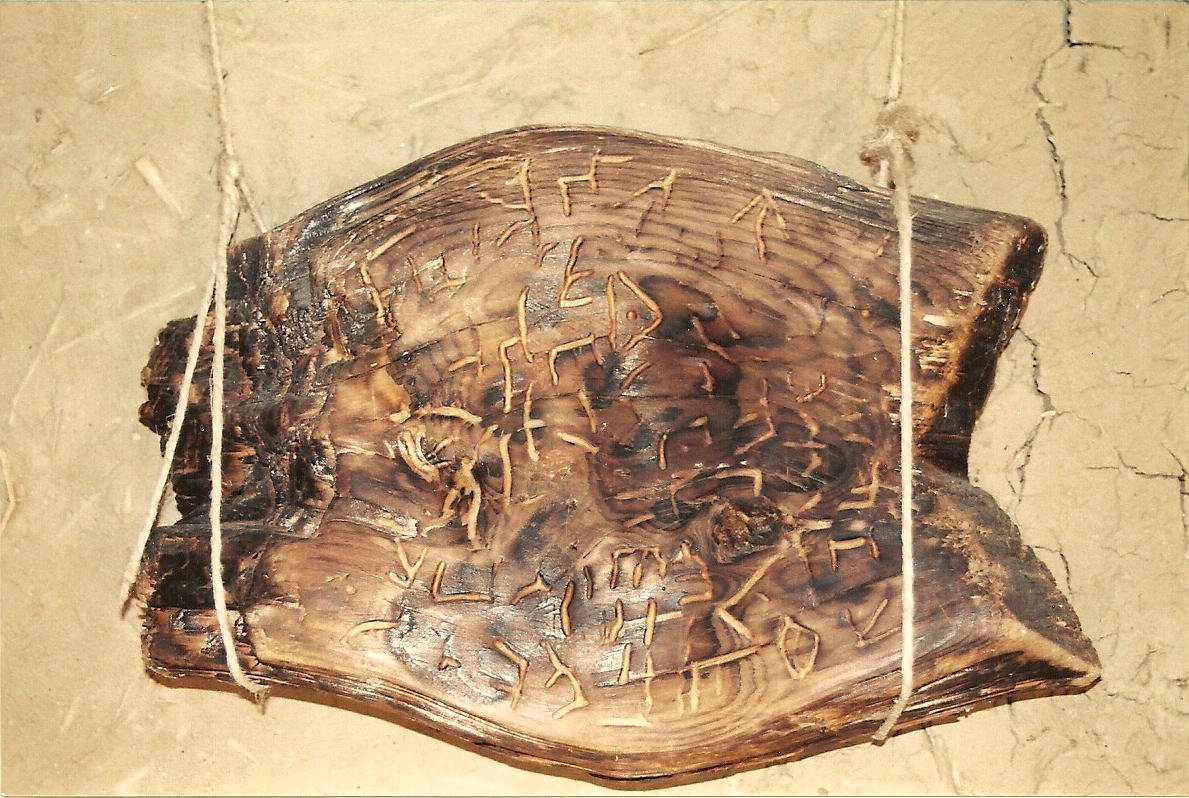In a discovery that could potentially rewrite the history of written language, the Dispilio Tablet, unearthed in Greece in 1993, has been dated to a staggering 5260 BC. This places it thousands of years before the previously accepted origins of writing in Sumer.
The ongoing research into the tablet promises to shed light on the early communication practices of humanity, and perhaps even redefine our understanding of the development of civilization.
- Dispilio Tablet dated to 5260 BC, potentially making it the oldest known written text.
- Symbols on the tablet could represent an early form of the Greek alphabet.
- Discovery challenges the conventional narrative of the origins of writing in Sumer.
- Researchers believe deciphering the tablet could offer insights into Neolithic life and communication.
Is this a glimpse into a lost world of communication, a testament to the ingenuity of our ancestors? Or is it a tantalizing enigma, forever beyond our grasp? Join us as we delve deeper into the mystery of the Dispilio Tablet and explore the implications of this groundbreaking discovery.
The Dispilio Tablet: A Window into the Neolithic Past
The Dispilio Tablet, an unassuming wooden artifact unearthed from the depths of the Dispilio Lake settlement in northern Greece, has ignited a fervent debate within the archaeological and historical communities.
This seemingly ordinary piece of wood, etched with enigmatic symbols, has been dated back to an astonishing 5260 BC. This revelation sends shockwaves through the established narrative of human history, potentially dethroning the Sumerian civilization from its long-held position as the cradle of writing.
The conventional timeline, placing the genesis of writing in Sumer between 3,000 and 4,000 BC, is now under scrutiny. The Dispilio Tablet, predating these Sumerian examples by millennia, challenges our understanding of the development of communication and the emergence of complex societies.

Seeds of Literacy
This discovery opens a window into the Neolithic past, offering a tantalizing glimpse into the cognitive abilities and cultural practices of our ancestors.
The Dispilio Tablet, once a silent relic of a bygone era, now speaks volumes about the potential for innovation and intellectual development in the early stages of human civilization.
It invites us to reconsider the timeline of human progress and to acknowledge the possibility that the story of writing is far more ancient and intricate than we previously believed.
Deciphering the Enigma: The Challenge and the Promise
The Dispilio Tablet, like an ancient codex sealed with an enigmatic cipher, continues to baffle researchers with its undeciphered symbols. These markings, etched into the wood millennia ago, tantalize with the promise of unlocking a lost world of communication and knowledge.
Some scholars, captivated by the resemblance of certain symbols to the ancient Greek alphabet, propose that the tablet might represent an embryonic stage in the development of written Greek.
Others, taking a more pragmatic approach, suggest that the symbols could be a rudimentary system for tallying possessions or recording transactions, a testament to the early stirrings of commerce and organized society.
A Look at the Lives of Neolithic Greeks
The challenge of deciphering the tablet is immense, akin to piecing together a puzzle with missing pieces and no reference image. However, the potential rewards are equally significant.
Should the code be cracked, the Dispilio Tablet could offer a treasure trove of insights into the lives, thoughts, and communication practices of Neolithic people. It could illuminate the social structures, economic activities, and even spiritual beliefs of a period shrouded in mystery.
The Rosetta Stone for the Neolithic World
The successful deciphering of the tablet could revolutionize our understanding of the Neolithic era, pushing back the boundaries of literacy and cognitive development.

It could challenge long-held assumptions about the capabilities of our ancestors and reveal a level of sophistication that has been largely overlooked.
The Dispilio Tablet, once a silent relic, holds the potential to become a Rosetta Stone for the Neolithic world, opening a new chapter in the story of human communication and intellectual evolution.
The Dispilio Lakeshore Settlement: A Treasure Trove of Neolithic History
The Dispilio Lakeshore Settlement, the very cradle that yielded the enigmatic tablet, stands as a captivating archaeological site in its own right, a veritable time capsule preserving the echoes of a Neolithic community.
Excavations conducted at this remarkable location have unearthed a treasure trove of artifacts, each whisper of a bygone era. From rudimentary tools fashioned from stone and bone to delicate ceramics adorned with intricate patterns, these relics paint a vivid picture of daily life in the Neolithic period.
Among the most evocative discoveries is a bone flute, a testament to the musical inclinations and cultural expressions of our ancestors. This delicate instrument, one of the oldest of its kind ever found in Europe, resonates with the melodies of a distant past.
Practical and Artistic Sensibilities
The Dispilio Lakeshore Settlement offers a rare glimpse into the multifaceted lives of Neolithic people. It reveals their ingenuity in crafting tools and utensils, their artistic sensibilities reflected in their pottery and ornaments, and their connection to the natural world through their agricultural practices and hunting endeavors.
This archaeological gem serves as a poignant reminder that even in the earliest stages of civilization, humans were capable of creativity, innovation, and a rich cultural tapestry.
A Journey of Discovery
The settlement, like the tablet it yielded, challenges us to reconsider our perceptions of the Neolithic era.
It paints a picture of a society far more complex and nuanced than previously imagined, a society where artistry, technology, and social organization intertwined to create a vibrant community on the shores of a prehistoric lake.

The Dispilio Lakeshore Settlement, a treasure trove of Neolithic history, invites us to embark on a journey of discovery, to connect with our ancestors, and to marvel at their resilience and ingenuity in shaping the world around them.
Radiocarbon Dating: Unlocking the Secrets of the Past
The astonishing age of the Dispilio Tablet, a revelation that has sent ripples through the academic world, was determined through the meticulous application of radiocarbon dating.
This scientific technique, akin to a time-traveling detective, harnesses the predictable decay of a radioactive isotope of carbon, known as 14C, to estimate the age of organic materials.
By measuring the residual amount of 14C in the tablet’s wood, scientists were able to peer back through the mists of time and pinpoint its creation to an era far more ancient than previously conceived.
Speculations and Debates
The tablet’s surprisingly early date, a staggering 5260 BC, has ignited a firestorm of speculation and debate. It challenges the entrenched narrative of the origins of writing, suggesting that the seeds of literacy may have been sown in the fertile soil of Neolithic Greece, millennia before the emergence of Sumerian cuneiform.
This revelation has also sparked a reevaluation of the cognitive capabilities and communication practices of Neolithic people, raising questions about the level of sophistication and complexity that existed in these early societies.
Results of Radiocarbon Dating
Radiocarbon dating, in this instance, has acted as a key, unlocking a hidden chamber in the annals of human history. It has revealed a tantalizing glimpse into a world where the written word may have flourished far earlier than we ever imagined.
The Dispilio Tablet, once a silent relic, now speaks volumes about the potential for intellectual and cultural development in the Neolithic era. It serves as a powerful reminder that the story of human progress is an ongoing narrative, filled with surprises and unexpected twists.

As science continues to refine its tools for exploring the past, who knows what other secrets may be unearthed, what other chapters may be added to the ever-evolving saga of human civilization?
The Future of the Dispilio Tablet: Conservation and Deciphering
The Dispilio Tablet, a fragile whisper from the distant past, is currently undergoing a meticulous process of scientific conservation. Like a precious artifact entrusted to the care of skilled restorers, the tablet is being painstakingly preserved to ensure its survival for generations to come.
This delicate operation involves stabilizing the wood, protecting it from further degradation, and ensuring that its enigmatic symbols remain intact for future scrutiny.
Once the conservation process is complete, the tablet will be ready to yield its secrets to the eager minds of researchers.
A New Chapter in the Story of Writing?
This blog post has explored the fascinating story of the Dispilio Tablet, a wooden artifact discovered in Greece that could potentially be the oldest known written text.
We delved into the ongoing debate surrounding its significance, the challenges of deciphering its enigmatic symbols, and the potential implications of this discovery for our understanding of the Neolithic era and the origins of writing.
Takeaways:
- The Dispilio Tablet, dated to 5260 BC, challenges the conventional narrative of the origins of writing in Sumer.
- Deciphering the tablet could offer invaluable insights into Neolithic life, communication, and cognitive abilities.
- The Dispilio Lakeshore Settlement provides a rich archaeological context for understanding the tablet and the people who created it.
- Radiocarbon dating played a crucial role in determining the tablet’s age and sparking debate about its significance.
- The future of the tablet lies in its careful conservation and the ongoing quest to decipher its symbols, a task that could potentially revolutionize our understanding of the past.
As we continue to explore the archaeological record and refine our scientific tools, we may yet uncover more clues that will help us unravel the secrets of this ancient artifact and the people who created it.






13 Responses
So curious, has anyone tried decoding the Dispilio tablet with modern tech? Could reveal so much more! Alice, got any insights on this?
Radiocarbon dating sounds like a solid way to pin down the age of these artifacts. Science ftw!
The notion of uncovering the lifeways of Neolithic Greeks through artifacts fills one with awe. There is poetry in the remnants of the past.
Not sure if calling it the Rosetta Stone for the Neolithic world is accurate. It’s significant, but maybe we’re jumping the gun? Need more evidence before such claims.
Love the blend of practical and artistic aspects of the Dispilio site. It’s so important for kids to know history is not just dates.
The results of radiocarbon dating must be fascinating. Precision in timelines changes our perspective on history.
Speculations surrounding the Dispilio tablet strike me as premature without a foundational understanding of its context. Theoretical as it may be, caution in interpretation is key.
I second Eliza’s point. Without context, our understanding remains purely speculative.
its amazing to think about how old these settlements are. makes you wonder about all the stories buried there.
does the tablet give any clues about what daily life was back then? would love to know!
The Dispilio tablet’s potential to rewrite our understanding of prehistoric literacy is unparalleled.
how do they even do that radiocarbon dating thing? sounds complicated but cool.
Absolutely love how art is intertwined with history in the Dispilio discoveries. Shows how creative our ancestors were!